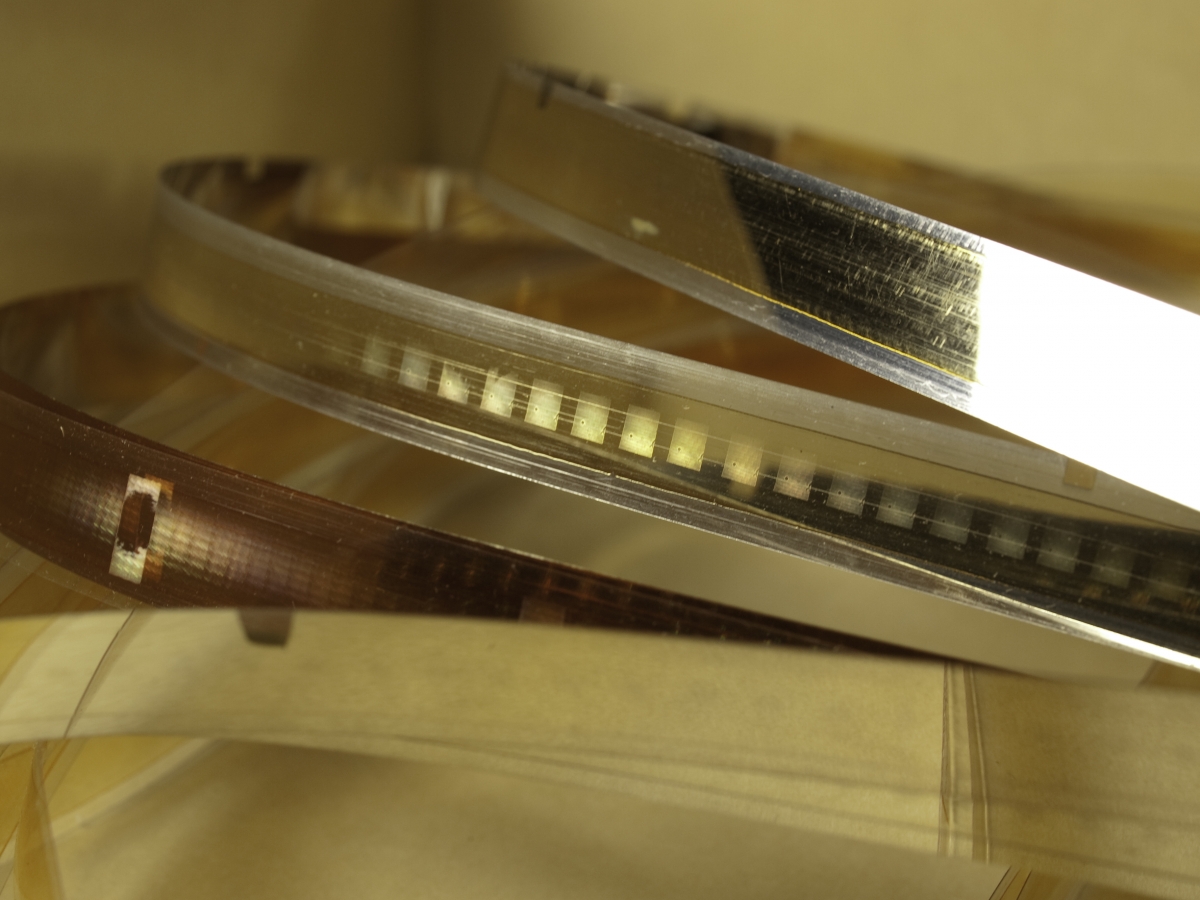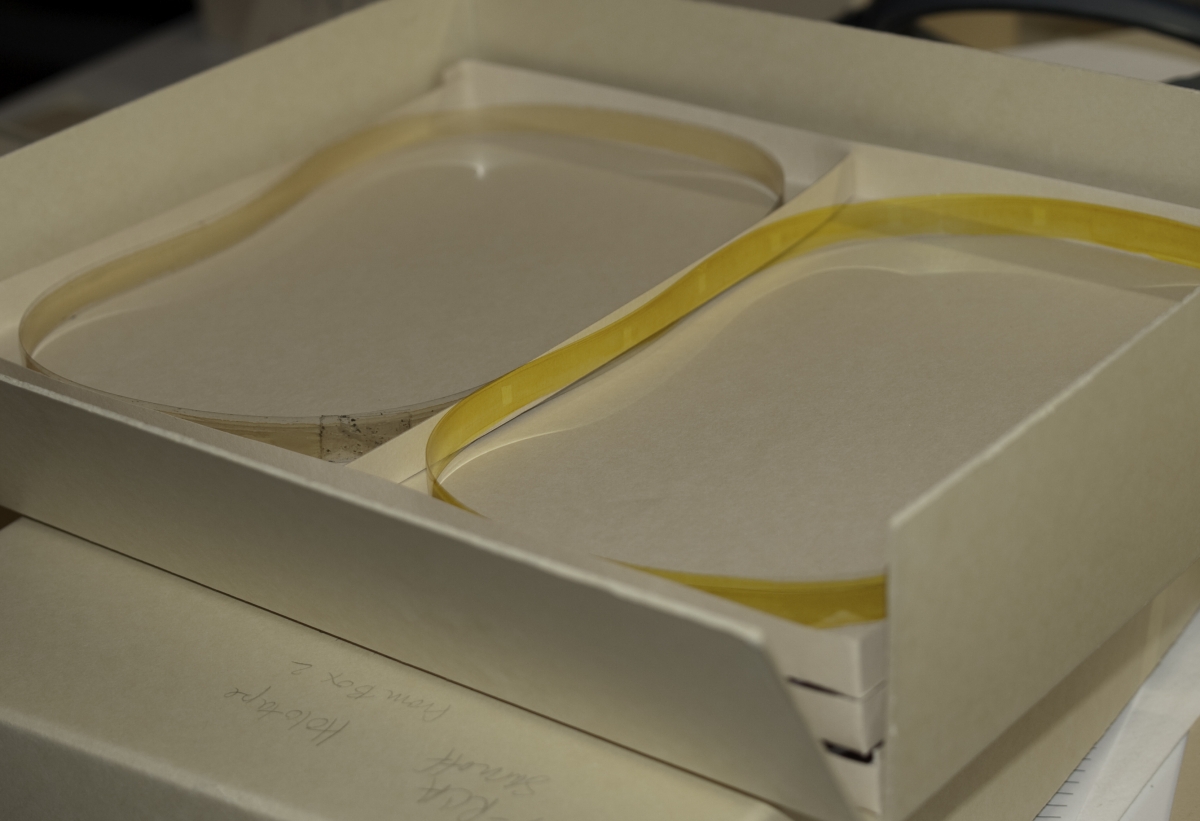An extremely unique group of items recently passed through Library Conservation. It was a couple of small boxes of loops of thin plastic film, labeled “Holotape” on the outside. I probably could have just made a new box with some spacers and passed it back to the project archivist who brought them in. However, I have a personal fascination with holograms, so I had to do some research. (Besides, that’s what conservators do, so we understand the needs of materials in our care.) Although the first ideation of the Hologram goes back as far as 1947, with Dr. Dennis Gabor, holograms could not be realized until the laser was invented in 1960. This makes the hologram a 20th century invention. Whether you consider it “old” or “new” might depend on your generation.
To me, the idea of the hologram has a futuristic vibe, but in reality is has yet to live up to its full potential as an art form. I see this as a problem in the difficulty of the technology getting into the hands of artists, along with the hurdles of understanding some pretty complex scientific principles. Coherent light, interference, stabilization tables, lasers, physics, and photographic chemistry - being a few that come to mind.
Now back to the object at hand. In the late 1960s to early 1970s, RCA worked on a method to store pre-recorded television programs using a holographic image on tape. Intended primarily for use by television broadcasters, the tape also contained the stereo audio portion in a groove along the edge, as with phonographs. (You know what those are - vinyl records.)

Close-up of holotape
The scientists at RCA intended Holotape as a lower-cost, more durable means of storing the media, as opposed to silver-based film. (I bet they also thought lasers and holograms were super-cool!) This technology could be used for both black and white and color programs.
The process of making the Holotape required several iterations of tape and it seems to have been extremely complicated, yet RCA also seemed pretty excited about it initially. It was even demonstrated at a New York meeting in 1972 of the Society of Motion Picture and Television Engineers. The initial film was a photoresist (polymer that is light sensitive, like photographic film) holographic tape. After this was made, it was electroplated with nickel to make the master, from which multiple copies could be pressed. The final product was a series of thermomechanically embossed holographic images on thermoplastic (most likely vinyl) film. Both the sound groove and the embossed image being in relief on the film surface. (So both the sound and image could be pressed at the same time, making it more economical.)
Some of the issues that Holotape intended to improve upon (over film) were image wobble, scratching of the support, and lack of image flicker. Because holograms reproduce images by means of wavelengths of light (measured in nanometers) they can record much more data in a smaller space than photographic film. Holotape would also allow redundancy of the recorded image to cover up defects or damages (as in storing digital files in multiple locations).
However there were also disadvantages; cost was only low if many final copies were made, due to the complexity of making the master copy. One difficulty with implementing the process was, at the time of the invention, the thermoplastic film had yet to be manufactured with properties necessary to produce long strips of holograms. At the time of the invention, television programs for broadcast were on tape. This had to be transferred to 16 mm film (color) to correspond to the width of the final Holotape. Specialized equipment that was needed included an electron beam recorder used for the transfer/ duplication. Also a laser and color Kinescope camera projection set-up were necessary to project/transmit the Holotape programs. This was all a very specialized procedure!

Holotape rehoused to prevent scratching
Looking at the Holotape with the naked eye does not reveal much. Some of our strips of tape had labels like “Snow Scene” and “Boat”. However, all I could see were floating geometric rainbow patterns!
Some recent conceptual demonstrations of holograms as 3-D projections seem to indicate that the scene with Princess Leia transmitting a message via hologram will come true, and fairly soon. Definitely something that I look forward to!
Laura Wahl is the Library Conservator at Hagley.
